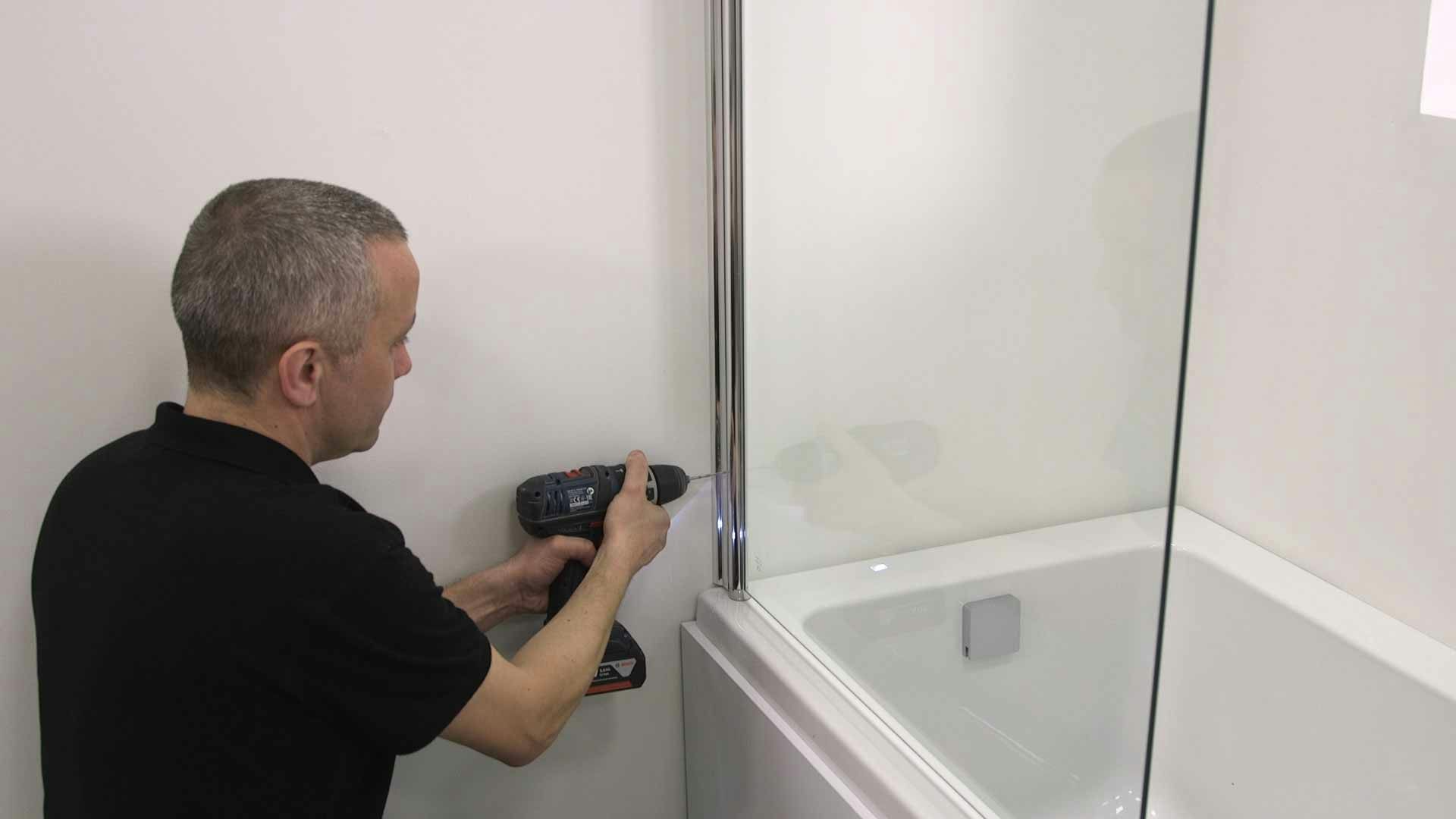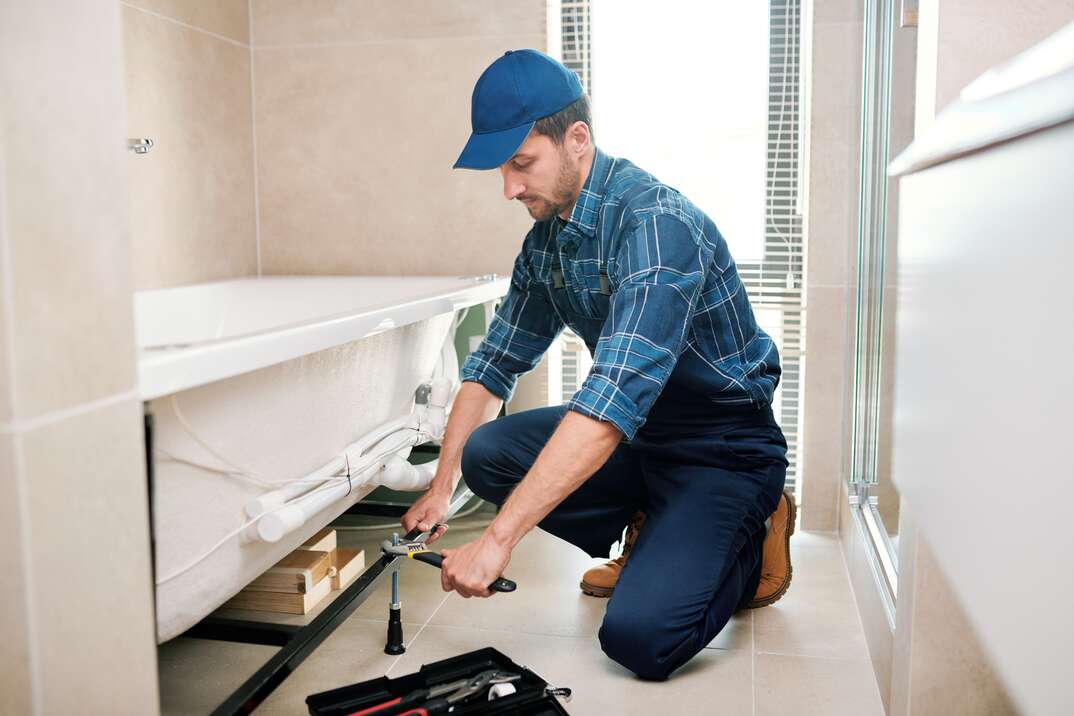Your Plumbing Crash Course: A Guide to Bathtub Installation
Your Plumbing Crash Course: A Guide to Bathtub Installation
Blog Article
The content in the next paragraphs pertaining to How to Install a Bathtub: Install an Acrylic Tub and Tub Surround is particularly compelling. Give it a go and draw your own conclusions.

Installing a tub isn't precisely brain surgery, however it does need solid plumbing, carpentry, and also in some cases, tiling skills. Changing an old bath tub with a new one is likewise a reasonably difficult task. If the old bathtub is conveniently available, the project can move rapidly; if you have to open up a wall surface to eliminate the old bathtub and position the new tub, the job is a lot harder. In either case, the project is within a house handyman's skills, although you will certainly require a helper to move out the old bathtub and also embeded in the brand-new one. See to it you have actually certified yourself for the work and also are comfortable trying it. Instead of hiring a service provider to take control of a halfway-completed project, it is better to think about using one before you start. Possibilities are you might require a professional plumber to make tube connections.
This write-up will aid you set up a brand-new tub in your restroom if you have currently bought a brand-new tub as well as don't require to change the arrangement of your previous water supply pipelines.
Your tools and material list should make up the following:
Getting ready for the Installation
To start with, the sustaining framework provided with the bath must be fitted (if called for) according to the manufacturer's directions. Next, fit the faucets or mixer to the bathtub. When suitable the tap block, it is important to make sure that if the tap comes with a plastic washer, it is fitted between the bathroom and also the taps. On a plastic bath, it is also sensible to fit a supporting plate under the taps unit to avoid stress on the tub.
Fit the flexible faucet adapters to the bottom of the two taps utilizing 2 nuts and olives (in some cases provided with the tub). Fit the plug-hole outlet by smearing mastic filler round the sink electrical outlet hole, and after that pass the electrical outlet through the hole in the bathroom. Utilize the nut supplied by the supplier to fit the plug-hole. Check out the plug-hole electrical outlet for an inlet on the side for the overflow pipeline.
Next off, fit completion of the adaptable overflow pipe to the overflow electrical outlet. Afterwards, screw the pipeline to the overflow face which ought to be fitted inside the bath. Ensure you use all of the supplied washing machines.
Connect the catch to the bottom of the waste outlet on the bath tub by winding the string of the waste electrical outlet with silicone mastic or PTFE tape, and screw on the trap to the electrical outlet. Attach all-time low of the overflow tube in a comparable manner.The bath ought to currently be ready to be fitted in its final position.
Removing Old Taps
If you need to replace old taps with new ones as a part of your installation, then the first thing you ought to do is detach the supply of water. After doing so, switch on the taps to drain any kind of water staying in the system. The procedure of eliminating the existing taps can be rather troublesome due to the restricted accessibility that is usually the instance.
Use a basin wrench (crowsfoot spanner) or a tap tool to reverse the nut that links the supply pipes to the faucets. Have a fabric prepared for the remaining water that will originate from the pipes. As soon as the supply pipelines have actually been gotten rid of, utilize the very same device to loosen the nut that holds the faucets onto the bath/basin. You will certainly need to stop the single faucets from turning during this process. As soon as the taps have been gotten rid of, the holes in the bath/basin will need to be cleaned up of any old sealing compound.
Before proceeding to fit the brand-new faucets, compare the pipe links on the old taps to the brand-new faucets. If the old faucets are longer than the new faucets, then a shank adapter is required for the new faucets to fit.
Setting up the Bathtub
Making use of the two wood boards under its feet, place the bath tub in the needed setting. The wood boards are valuable in equally spreading the weight of the bathtub over the area of the boards instead of concentrating all the weight onto four tiny factors.
The following goal is to ensure that the bath tub is leveled all round. This can be attained by inspecting the spirit level as well as readjusting the feet on the bathtub until the level reviews level.
To set up faucets, fit the bottom of the furthest adaptable faucet port to the ideal supply pipe by making a compression sign up with; after that do the same for the other faucet.
Activate the water and examine all joints and also new pipework for leakages and also tighten them if needed. Load the tub and additionally check the overflow outlet as well as the regular outlet for leakages.
Lastly, repair the bath paneling as explained in the maker's user's manual. Tiling and sealing around the tub ought to wait up until the bath tub has been utilized at the very least when as this will resolve it into its last position.
Suitable New Taps
If the tails of the brand-new taps are plastic, then you will need a plastic connector to prevent damage to the string. One end of the adapter fits on the plastic tail of the tap and the various other end provides a link to the existing supply pipelines.
If you require to fit a monobloc, after that you will certainly need minimizing couplers, which links the 10mm pipe of the monobloc to the typical 15mm supply pipeline.
Next, place the tap in the mounting opening in the bath/basin making sure that the washing machines remain in location between the tap and also the sink. Protect the faucet in place with the manufacturer provided backnut. When the faucet is firmly in position, the supply pipes can be connected to the tails of the taps. The faucets can either be connected by using corrugated copper piping or with regular faucet adapters. The former type needs to be attached to the faucet ends initially, tightening up only by hand. The supply pipes can later be linked to the various other end. Tighten up both ends with a spanner after both ends have actually been connected.
Tiling Around the Bathtub
In the location where the bathroom satisfies the ceramic tile, it is essential to secure the joins with a silicone rubber caulking. This is necessary as the installation can move enough to crack a rigid seal, creating the water to permeate the wall between the bathroom and also the tiling, bring about complications with dampness and also feasible leakages to the ceiling below.
You can select from a selection of coloured sealers to blend in your components and also fittings. They are sold in tubes as well as cartridges, and are capable of securing voids as much as a size of 3mm (1/8 inch). If you have a larger space to fill, you can fill it with twists of drenched paper or soft rope. Remember to constantly fill the bath tub with water before securing, to permit the movement experienced when the bathtub is in use. The sealer can break rather very early if you do not take into account this motion prior to securing.
Alternatively, ceramic coving or quadrant tiles can be made use of to border the bath or shower tray. Plastic strips of coving, which are easy to use and also cut to size, are likewise easily available on the market. It is advisable to fit the ceramic tiles utilizing waterproof or water resistant glue and also grout.
Bathtub Installation
How Important Is A Bathtub To Your Home?
High-quality baths, showers, and other bathroom updates are necessary when considering a smart investment in your home. It’s a room that you go to every day and one that is constantly being used by guests.The bathroom is one of the top trafficked rooms in a home and also one of the most valuable in terms of home resale.
Install Piping Before Tub
You will be using your existing drain and waste vent system, but pipes required include the hot and cold water supply lines and a pipe leading to a shower head. A mixing valve and shower head are also needed. Air chambers may be required.
Position the Tub
Lower the tub into place so that the continuous flange fits against the wall studs and rests on 1’x4' or 2’x4' supports. Anchor the tub to the enclosure with nails or screws inserted through the flanges into the studs.
NOTE: Remember, bathtubs and shower stalls may require support framing. A bathtub filled with water is extremely heavy, so check building codes and framing support before installing the tub.
Assemble Drain Connections
Assemble the bathtub drain connections by connecting the tub overflow with the tub drain above the trap, not beyond it. The trap will have a compression fitting that screws over the arm of the overflow assembly.
Place a Pipe For the Shower Head
First, locate a brass female threaded winged fitting and attach it to a framing support via a screw or a nail. Then run a pipe up the wall for the shower head. Sweat or solder the other side of the brass fitting to the top of the pipe.
Attaching Hot and Cold Water Lines
Attach your water lines for both hot and cold by sweating these directly into the hot and cold ports of the mixing valve. The mixing valve will be how water enters the tub’s system, not by the pipes themselves.
Install the Spout
Extend a piece of 1/2 inch pipe, or whichever length is specified in the manufacturer’s instructions, for the tub spout. Sweat on a male threaded fitting at the end of the pipe or use a brass nipple of the proper length and a 1/2 inch cap.
NOTE: At this point you should have your rough-in plumbing work inspected before proceeding further.
Check For Leaks
Restore the water pressure and check the drain connection and the supply pipes for any sign of leaking.
estore the Bathroom Wall
Replace the wall with moisture-resistant drywall as a base for your wall covering. Seal the joints between the wall and your new tub with silicone caulk as protection against water seepage.
https://www.berkeys.com/2016/12/02/bathtub-installation-dallas/

Do you appreciate reading up on A Step-by-Step Guide to Installing a Bathtub? Try to leave feedback directly below. We would be pleased to know your ideas about this post. Hoping that you visit us again in the near future. Those who enjoyed reading our blog entry kindly remember to share it. I appreciate reading our article about How to Install a Bathtub.
Get industry-leading emergency plumbing. Report this page